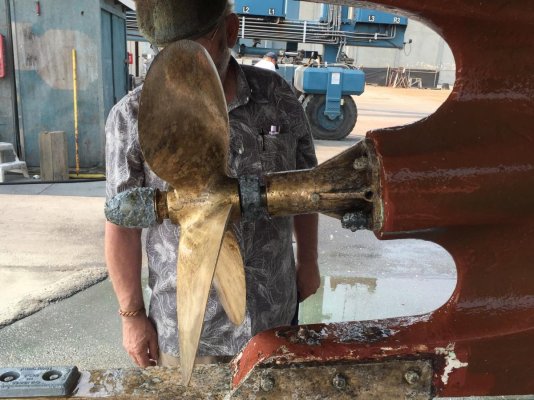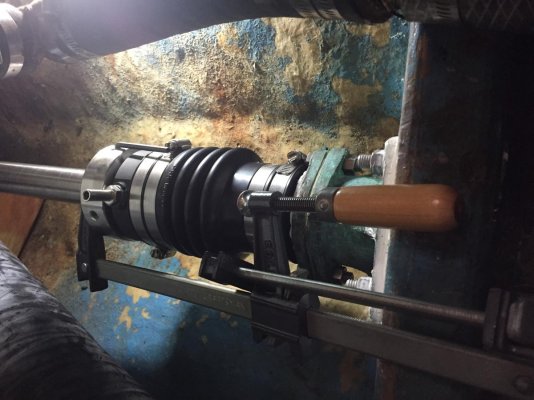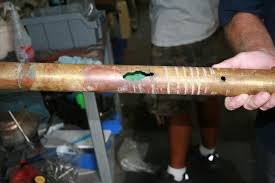Dave_E
Senior Member
Hi All,
My sailboat had a hole in the boat with a molded "tube" on the inside that a stuffing box or PSS would clamp onto. Simple. Picture below is the new trawler. Its got a big bronze housing bolted to the boat (that has the "cutlass" bearing). My question is this: Is the boat from that point on just a molded hollow space? Then there is the "stern tube"? that is stuffed into the mold? I have a cross member with a tube coming out of it (see other picture - the clamps are to put the required tension on the PSS bellows before tightening the set screws on the puck). I have a drip coming from UNDER that cross member. I have no idea what's back there and why I have a drip. Obvious the water is coming in from the "cutlass", but don't know how it's getting into the boat. Need some structural expertise. Thanks.
Dave
My sailboat had a hole in the boat with a molded "tube" on the inside that a stuffing box or PSS would clamp onto. Simple. Picture below is the new trawler. Its got a big bronze housing bolted to the boat (that has the "cutlass" bearing). My question is this: Is the boat from that point on just a molded hollow space? Then there is the "stern tube"? that is stuffed into the mold? I have a cross member with a tube coming out of it (see other picture - the clamps are to put the required tension on the PSS bellows before tightening the set screws on the puck). I have a drip coming from UNDER that cross member. I have no idea what's back there and why I have a drip. Obvious the water is coming in from the "cutlass", but don't know how it's getting into the boat. Need some structural expertise. Thanks.
Dave






